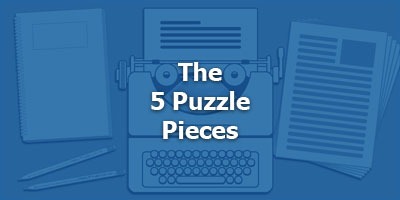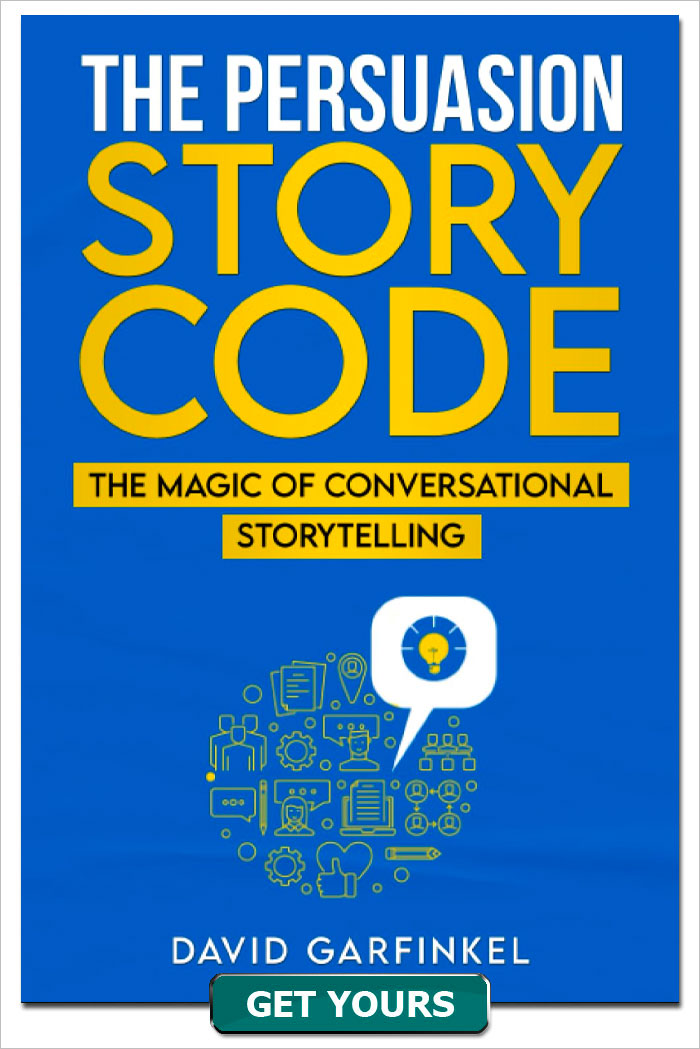The 5 Puzzle Pieces
Published by: David Garfinkel on 08-26-2019
Tweet
This show is especially for service business owners and copywriters who write for service business owners. I have reason to believe that this includes 68% of our audience. If that’s not you, stick around, because I think you’ll find a few tips that you can use for other types of copywriting and marketing.
It all started a few weeks ago when I did critiques on lead-generation sales letters for two business owners. They were on opposite sides of the country and in very different businesses. But in both cases, they had remarkably similar problems with their copy.
What’s more, I ended up using the same method, more or less, to help them turn what they sent me into powerful, response-getting sales letters.
Then I was reading an interview with the great songwriter Suzanne Vega. She’s best known for the hit song “Luka” many years ago. She said something about the puzzle pieces falling into place. Then I went back to the interview and I couldn’t find it, but she did say a lot of things close to that.
Anyway, that’s how it is with copy. At a certain point you’ve done enough work so the pieces fall into place. Today I want to share what the five most important pieces are for service business owners, and how they fit together.
In a way, there’s a sixth piece of the puzzle, too. It’s this:
OK. So here’s what we’re going to do. Of course I can’t reveal any details about either of the clients, but I don’t need to for this show. What we’ll do is, I’ll share what each piece is and give you some questions you can ask to make sure you’ve got this piece as good as possible.
The first piece is the hook/headline/opening. This is where most people get it very, very wrong. A couple of reasons: First, it’s not catchy. Second, and this one’s easier to spot but sometimes harder to fix: It asks the prospect to meet the business owner where they are, mentally, rather than reaching and stretching to meet the prospect where they are.
I’ll give you a simple example. Let’s say you do Facebook campaigns. A typical marketer might start out with, “Are you getting the best roi possible with your Facebook ads?”
Reasonable enough question, but that’s the problem: It’s too reasonable. The prospect is thinking, “Help! My Facebook ads aren’t working. How am I going to get new business?”
So a good hook would be built around what is emotionally troubling the prospect, that you can solve. Not around the end result of your solution, which would be better roi for Facebook ads.
Here are some questions you can use on this puzzle piece yourself:
Whose point of view does the opening of my copy speak to?
If you overheard the words in a conversation, would you want to eavesdrop on the rest of the conversation?
How well do your hook and opening open up the prospect’s awareness of an emotionally troubling problem they already know about, that you can help them solve?
The second puzzle piece is: staying on the problem and expanding it… in an empathetic, understanding way… while you point out the increasingly negative real-life implications to the prospect of the problem.
In simpler terms, this is called skillful agitation of the problem.
Like with our facebook ads marketer, you put together a sequence of events that leads to spending more and more money and getting less and less business from it.
A couple of problems I see when I critique copy:
First, the “nice guy” syndrome. People don’t want their prospects to get upset, so they don’t do this at all.
Second, the “lunge and plunge” syndrome. People who go for the throat all at once, rather than building up to it at a more digestible pace. So the prospect can digest this.
Some questions to help you hone this puzzle piece:
Are your statements and questions about emotions rather than facts?
Is it easy for the prospect to understand that you care about their situation?
Can the prospect readily relate to what you’re talking about?
The third puzzle piece is a lot easier. Yet many, many business people leave it out or are very shy about including it.
This puzzle piece is identifying yourself and your relevant credentials. “Relevant” means something your prospect would care about and see as making you qualified to do what you do, or maybe even seeing you as the best choice.
So, having a certification from your local community college for online advertising might not be a good credential for the facebook ads expert to include.
Having added profits to 11 businesses would be a very good credential. Because that’s what the prospect your facebook ads expert wants, is looking for.
Some questions to help you get this puzzle piece right:
Are you telling your prospects what they need to know to feel assured that you can do the job?
Is it easy to understand how the credentials you give make you qualified?
Are you leaving out things that will impress people without convincing them that you’re a good choice?
The fourth puzzle piece is credibility and believability all the way through. This is simple but not always easy. You need to write the way you would talk, if you were actually meeting a prospect and you were relaxed and confident.
I find sometimes people get too far down into technical details, or too hypey to seem genuine and authentic. I have often said that copy is the spoken language in written form. That’s worth remembering.
So the facebook person might not want to say, “If you are using the facebook pixel to retarget customers who are more than one standard deviation away from your target market, that could cause unacceptable shrinkage.”
Even if someone knows what it means, it makes people feel uncomfortable.
You’d be better off saying something like this in your sales letter: “You want your ads to reach as many targeted prospects as possible, and avoid getting clicks from people who would never buy from you in the first place.”
See the difference?
Here are some questions for puzzle piece number 4:
How easy is it for people to read what you’ve written and feel you know what you’re talking about?
Are you keeping everything as simple as possible?
Are you sounding like someone your prospect would like to have a conversation with?
The fifth puzzle piece is your offer. Many people have the wrong idea that simply asking a prospect to call them is going to get them business. That’s rarely the case.
What you need to do instead is offer some kind of risk-free piece of information, like a report, or a quick phone conversation, that offers specific, valuable benefits. So that if your prospect never ends up doing business with you, it wasn’t a waste of their time.
People are often scared to do this. They think they’ll be giving away the store. But if you are a service business owner and you don’t have enough information and skills to give something valuable away to start the relationship, then you may not have a store for very long anyway. You could go out of business in a hurry.
So, for the facebook guy, don’t say, “Need to improve your Facebook advertising? Call me at 1-800-I’m-an-idiot”
Instead, say, “If you’d like to improve your Facebook advertising, I can probably help you. Let’s set up a 10-minute phone call and I’ll tell you 3 things you can do that 99% of facebook advertisers never think of, that can start to get you more business right away. And if you like what you hear, we can talk about working together.”
That’ll work a lot better.
So here are three questions to get the fifth puzzle piece in good shape:
Are you making an enticing offer to get a qualified prospect to call you?
Is the offer truly risk-free and beneficial to the prospect?
Will the prospect get information or some other value from the offer that will make them more likely to work with you?
Before we sum up, I realize this will be a lot easier for some people to implement than it will for others. That’s why I’m leaving all of the questions on the show notes page.
And, if you would like a critique, I’m leaving the link to the critiques page on my coaching site on show notes page on copywriters podcast.com The link is to the page on my coaching site:
http://www.garfinkelcoaching.com/copy-critiques/
Now, here are the five puzzle pieces again:
1. Hook/headline opening
2. Staying on the problem and expanding it in an empathetic, understanding way
3. Identifying yourself and your relevant credentials
4. Credibility and believability all the way through
5. An offer that provides risk-free benefit to your qualified prospect.
Keywords: Copywriting basics foundations









